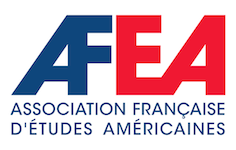Call for papers > Call for workshops
Call for Workshops
Click here to download the call for workshops
Scientific committee :
Mathieu Duplay, Université Paris Diderot, LARCA (UMR 8225), Hélène Quanquin, Université de Lille, CECILLE (EA 4074), Camille Rouquet, Paris Sciences et Lettres/LARCA (UMR 8225)
Workshop and/or paper proposals to send jointly to Mathieu Duplay, Hélène Quanquin, and Camille Rouquet by October 29 2018.
In a famous passage from “Self-Reliance” (1841), Ralph Waldo Emerson draws a sharp distinction between two sources of knowledge—“tuition,” which encourages adherence to canonical models and the respectful imitation of unquestioned authorities, and “intuition,” defined as resistance to all forms of discipline imposed from without. Unlike “tuition,” “intuition” highlights the creative power of thought, accounts for its ability to challenge traditional disciplinary boundaries, and calls into question the modes of surveillance and control for which they appear to provide justifications.
“A man should learn to detect and watch that gleam of light which flashes across his mind from within, more than the luster of the firmament of bards and sages,” Emerson writes. As clear-cut as this dichotomy appears, it soon gives rise to a paradox ; for while intuition rebels against the external constraints that limit freedom of thought and action, it does so in the name of a higher principle of truth and justice which curtails the individual’s free will and forces them to submit to an even stricter discipline : “We lie in the lap of an immense intelligence, which makes us receivers of its truth and organs of its activity. When we discern justice, we do nothing of ourselves, but allow a passage to its beams.”
Emerson’s successors were quick to perceive the implications of this argument, which sets forth key American attitudes towards discipline and its discontents in terms that still resonate with us today, even though they have acquired different connotations at a time when the rise of modern disciplinary society raises fresh questions about surveillance and power. The political impact of Emerson’s argument cannot be overstated ; examples that come to mind include Thoreau’s concept of “civil disobedience,” which was formulated in 1849 in the wake of the abolitionist movement and has proved extremely useful to numerous resistance movements—the Civil Rights movement, AIDS activism (particularly in the 1980s and 1990s), and Black Lives Matter, to mention just three examples.
The question of discipline and its discontents also raises esthetic and epistemological issues. Explicitly considered by Emerson in relation to artistic creation, the deliberate break with dominant models and the search for a higher truth are some of the driving forces in literature and are present in many other cultural fields, particularly in conversations about the avant-garde. This discourse also implicitly outlines a vision of literary and cultural history with an evolution that is neither continuous nor linear, constantly pausing in order to return to the source of all knowledge and creation. We are then led to wonder about the way each present tries to situate itself in a wider historical temporality the moment it makes indiscipline one of its ideals. Ultimately, to think about discipline and indiscipline, on discipline and its discontents, involves a relation to interpretation and knowledge as well as its transmission : the Emersonian term “tuition” is purposefully borrowed from the lexicon of teaching, and the questioning of what is passed on from the master to the disciple also tests the boundaries of disciplines and their institutionalization, not to mention the different forms of control that it creates. Disciplines impose a discipline of their own as evidenced by Foucault’s studies on the links between disciplinary power and the creation of knowledge. From that standpoint, we may wonder about the way disciplines have been historically organized in the United States – history and literature ; women’s history, whose institutionalization took place, not “from the core of the academic establishment” but from what Julie Des Jardins has called the “social and professional peripheries” ; or the dichotomy between art history and visual studies, which have called for the integration of so-called popular cultures into academia since the 1990s). In the same way, we may investigate the disciplines that are part of American studies in France and elsewhere as well as their possible intersections and even their passing through the notions of extradisciplinarity and “interdiscipline” (Julie Thompson Klein), which increasingly combine visual and textual objects. This will lead us to question the hierarchy of academic fields and disciplines, and to ponder visual objects which are varyingly used as mere illustrations, as media, or as objects of study.
It is crucial to remember that Emerson’s theory draws a model that could also come to be questioned in relation to several concepts : for instance, by the notion of infrapolitics, which was the topic an issue of Revue Française d’Études Américaines in 2012 ; or by “discrete” resistance that favors restraint over loud and head-on rebellion against the dominant powers. Emily Dickinson’s work is another example of this form of resistance as it appears to be molded into tradition but really defies at its core the authoritarian logic with which we associate those traditions. Eric Foner’s “abolitionist concept” is further example of resistance from the margins, a position embraced by and not forced onto individuals. The circulation of “resistant” ideas and practices will also be a topic of reflection in a variety of historical moments, as will the tensions inherent to the concept of the activist scholar embodied by historical figures such as W.E.B. Du Bois and Susan B. Anthony.
For the questioning of discipline and its discontents invariably leads us to wonder about our own positioning in academic institutions, and about our relationship with norms and injunctions, whether imposed to us or by us.


